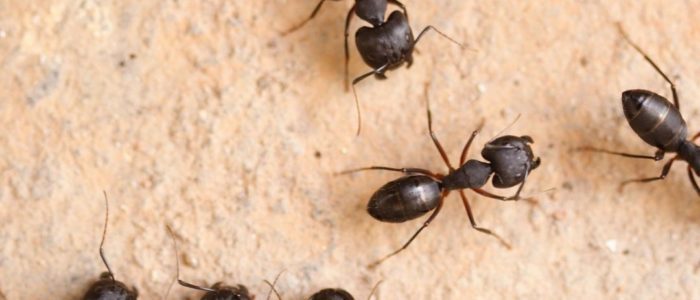Navigating the Ants of Westchester: A Handy Guide for Homeowners
From the delicate trails of Pavement Ants to the bustling colonies of Carpenter Ants, Westchester County’s ecosystem is teeming with a variety of ant species. For homeowners, cohabiting with these tiny insects can pose a range of challenges, from nuisance infestations to potential damage to the property. To help you understand and tackle the issue, this comprehensive guide is just what you need to become an ant expert in your local area.
An Overview of Ants in Westchester County
The diversity of ant species in Westchester County reflects the region’s varied landscape, from urban settings to woodland areas. Here are some of the most commonly encountered ants in the area:
Pavement Ant (Tetramorium caespitum)
One of the most common urban ants, Pavement Ants often nest under sidewalks, driveways, or the concrete slabs of home foundations. Recognizable by their dark color and pale appendages, they are known for their invasive nature, and their tendency to form massive colonies.
Carpenter Ant (Camponotus spp.)
Carpenter Ants are notorious for their ability to cause structural damage to homes by excavating wood for their nests. In Westchester, the black carpenter ant is prevalent, and can often be mistaken for termites due to their wood-chewing habits.
Odorous House Ant (Tapinoma sessile)
These small, brown ants are serious home invaders, earning their name from the pungent smell they produce when crushed. Odorous house ants build their colonies both indoors and outdoors, usually close to a water source.
Pharaoh Ant (Monomorium pharaonis)
Pharaoh ants are small, yellowish-brown insects originally from tropical regions. They are a common household pest known for their persistent trails and rapid rate of reproduction, which can lead to large, challenging infestations.
Seasonal Patterns and Behavior
Understanding how ant behavior changes with the seasons can be key to preventing or dealing with infestations in your home. Here’s a seasonal breakdown of what you might observe:
Spring
This is when ants become most active, as they resume their search for food and mates after the winter. Winged reproductive ants, known as “swarmers,” may be spotted during their mating flights, which can be alarming for homeowners.
Summer
With the warmer temperatures, ant colonies grow rapidly, and outdoor activities can lead to more contact with these insects. Picnics and open containers present easy food sources, often leading to sightings of foraging ants indoors.
Fall
Cooler weather drives ants indoors in search of food and protection from the elements. Homes with easy access, such as through cracks or gaps, are particularly at risk for infestations.
Winter
As with many pests, winter is a time for ants to hunker down. Indoor colonies can survive off of stored foods and may remain active near heat sources, posing a year-round challenge.
Distinguishing and Diagnosing Ant Infestations
Spotting a few stray ants in your kitchen may not necessarily mean you have an infestation. Here’s how to diagnose a potential ant problem:
Trailing Behavior
Watch for ants trailing in a line, especially near food sources and potential entry points.
Swarmers
If you notice winged ants indoors, it’s a clear sign that a nearby colony may be established.
Visible Nests
Some ants create visible mounds or nests, especially those that forage outside your home.
Damage
For Carpenter Ants, look for signs of wood damage near their nests, which are often located in moist, decaying wood.
Prevention Techniques for Ant Control
A proactive approach can save you from an ant invasion. Here are several prevention techniques to consider:
Seal Entry Points
Since ants can infiltrate through the tiniest cracks, seal entry points with caulk or weather stripping.
Maintain Cleanliness
Regularly cleaning and removing food crumbs and standing water can help make your home less attractive to foraging ants.
Landscaping Tips
Keep vegetation and woodpiles away from the sides of the house, and maintain a clear boundary between your landscaping and the structure.
Moisture Control
Addressing any moisture issues in and around the home will help deter Carpenter Ants, who are drawn to damp wood.
Ant Control and Management Strategies
If you find yourself dealing with an ant infestation, professional pest control services can be a homeowner’s best friend. At First Rate Pest Solutions, we use a combination of treatments, including:
Inspection
Thorough inspections are the first step to effective ant management, identifying species and nesting locations.
Exclusion
Sealing cracks and crevices, and implementing structural repairs can keep ants out of your home.
Baits and Sprays
Strategically placed baits or targeted sprays can be effective for controlling ant populations.
Environmental Controls
Modifying the environment to be less hospitable to ants can involve everything from managing moisture to altering food storage practices.
Partnering with First Rate Pest Solutions
At First Rate Pest Solutions, we offer tailored solutions to take on ant infestations in Westchester County. With our local expertise and advanced pest control techniques, we pride ourselves on delivering peace of mind to homeowners facing ant challenges.
Whether you’re looking for a one-time service or a tailored annual plan, we’re here to provide the right solutions for you. Contact us at www.pestfree123.com to discuss your ant control needs.
By becoming familiar with the common ant species in Westchester and employing effective management strategies, you can protect your home from these unwelcome guests. Remember, the best offense is a good defense—so take proactive steps to ant-proof your home, and know that professional assistance is always at your fingertips.
Navigating the world of local ant species doesn’t have to be daunting. With the right knowledge and support, you can maintain a pest-free environment and enjoy the comfort of your home without sharing it with a colony of ants.


Comments are closed.